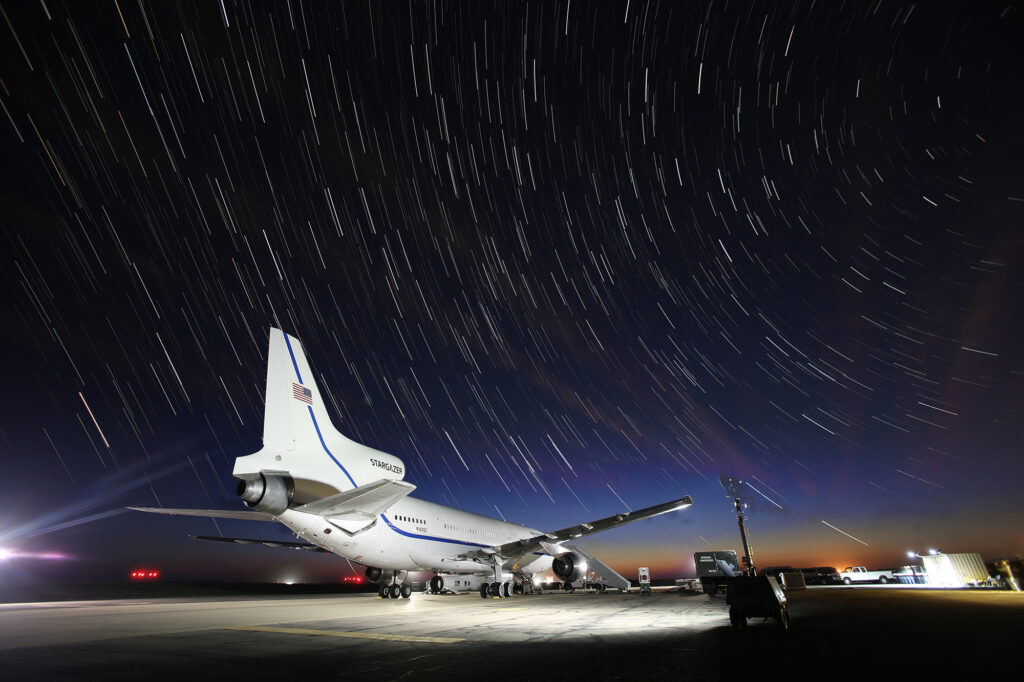
The U. S. Space Force successfully launched the Tactically Responsive Launch-2 (TacRL-2) mission on a Northrop Grumman Pegasus XL rocket from Vandenberg Space Force Base on June 13.
WASHINGTON: The Space and Missile Systems Center (SMC) has expanded its pool of potential providers of commercial launch services, bringing the number of companies to 11 who can compete for some 20 expected rapid launch contracts through October 2028.
All three of the new additions to the Orbital Services Program-4 (OSP-4) Indefinite Delivery/Indefinite Quantity (IDIQ) contract vehicle, announced last week, already have been contracted by DoD in some form: ABL Space Systems Corp., Astra Space, Inc., and Relativity Space, Inc.
OSP-4 has a contract ceiling of $986 million, a SMC spokesperson explained in an email. Procurement funding comes from the “Rocket Systems Launch Program (RSLP, PE 1206860SF) for the initial IDIQ orders for each provider to develop a Launch Service Users Guide.” Funds for each individual mission “is provided by a combination of RSLP Procurement funding, Tactically Responsive Launch (TacRL) funding, and mission partner funding based on the circumstances of each mission.”
OSP-4 was initiated in October 2019, as a follow-on of the Orbital/Suborbital Program-3 (OSP-3) contract, which expired in November 2019. “The contract utilizes a low barrier-to-entry to target both mature launch providers and those emerging companies who are approximately one year from being launch capable,” the SMC spokesperson said. Each company must be able to launch a payload greater than 400 pounds (181 kilograms) within a 12 to 24 month period from contract.
OSP-4’s goals sound confusingly similar to the Space Force’s TacRL effort, which itself is a new iteration of the former Rapid Space Launch Initiative (RSLI). TacRL — now managed by SMC’s new Space Safari office — is focused on very rapid launch, with a goal of turning around a launch within 24 hours.
But TacRL is a demonstration program, whereas OSP-4 is a contract vehicle that can be used to acquire tactically responsive launch services.
“The Orbital Services Program-4 (OSP-4) contract was used to acquire the Tactically Responsive Launch-2 (TacRL-2) mission, which was successfully launched in June 2021. TacRL-2 used congressionally-added funds and funding reprogrammed into the TacRL program element, which was established in Fiscal Year 2020,” a Space Force spokesperson explained.
“Congress added an additional $15 million in the Fiscal Year 2021 defense appropriation, which the Space Force plans to use for two tactically-responsive missions (TacRL-3 and TacRL-4). These missions will build upon the TacRL-2 lessons learned to inform any potential future tactically-responsive launch capability. Based on the timing of appropriations, these launches are scheduled for the third quarter of Fiscal Year 2023.”
Space Safari launched TacRL-2 on June 13, in partnership with the Small Launch and Targets Division within the SMC’s Launch Enterprise. The payload was a small space domain awareness satellite built and operated by the Air Force Research Laboratory and Space Dynamics Laboratory; the launch provider was Northrop Grumman, which used a Pegasus XL rocket deployed from its Stargazer mothership aircraft.
“TacRL-2 successfully achieved the following objectives,” according to the Space Force spokesperson:
- Launched a tactically-relevant space vehicle(s) on short notice to an operational orbit determined on tactical timelines;
- Used a proven launch solution and launch platform to reduce mission risk;
- Achieved launch readiness within four months of contract award;
- Executed the launch campaign on a responsive call-up period, following almost six months of ready-to-launch standby status; and
- Established and executed TacRL Concepts of Operations and Tactics, Techniques & Procedures.






















